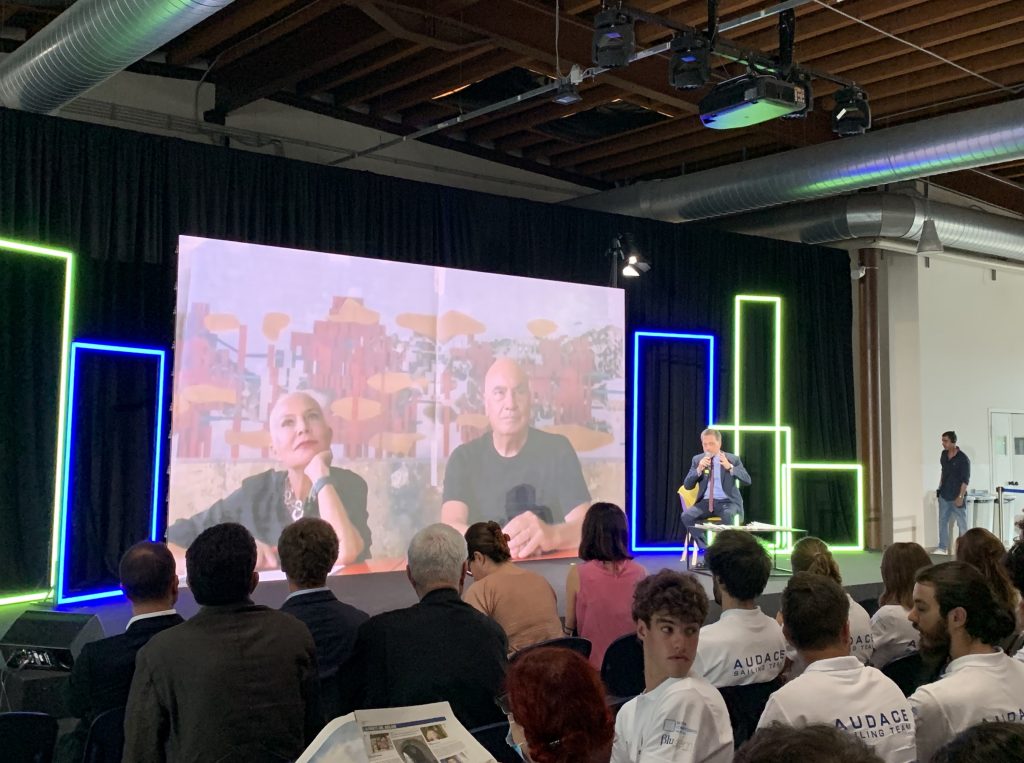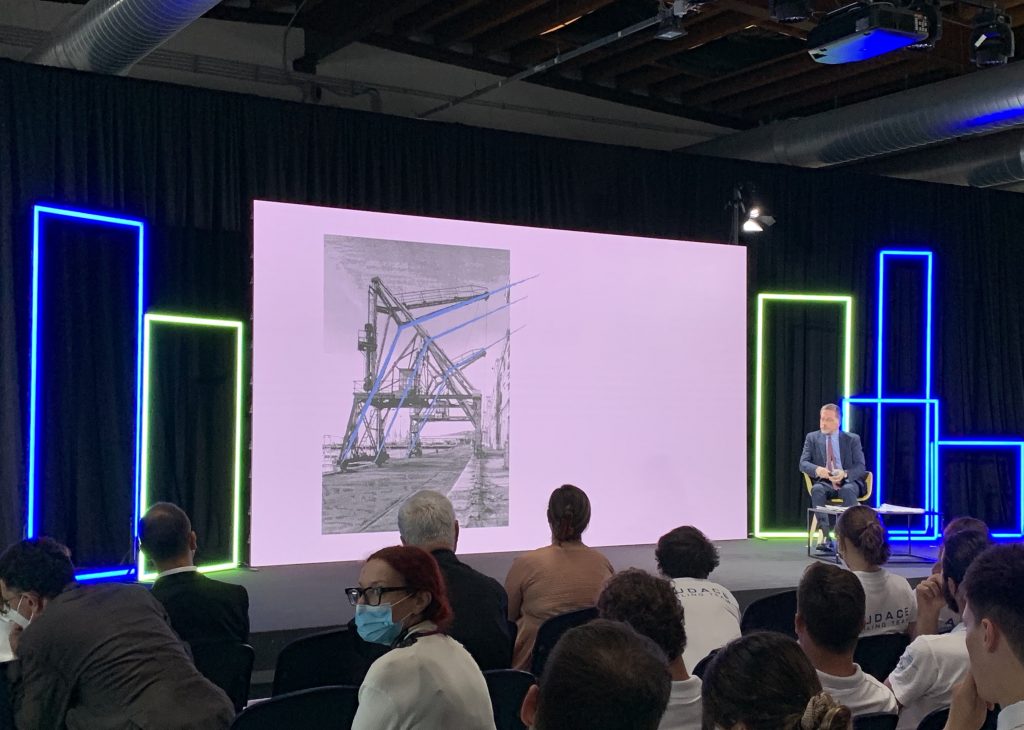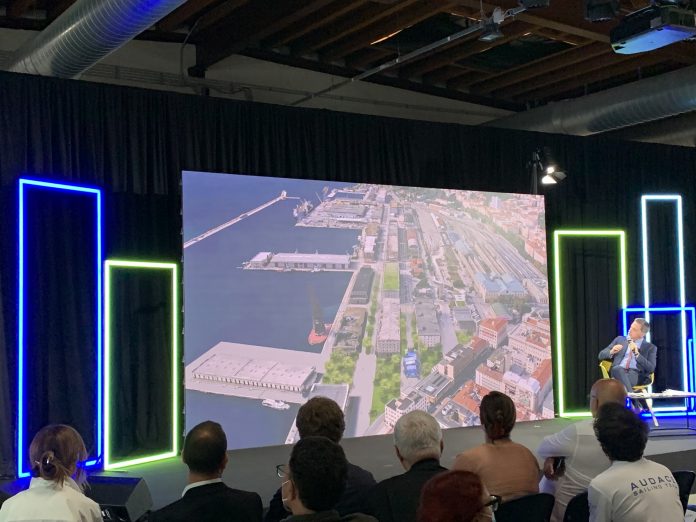by In Trieste
Architects Fuksas revealed the project for the cable car in Trieste last night to a room full of curious Triestini.

“Cable car is an innovative and environmentally friendly public transport solution: 100% electric, it is less polluting than a car and three times faster to reach its destination,” said the architects.
The service aims to transport 800 every day in both directions. Around 20,000 passengers are expected to use the service monthly. “The station itself will be tiny,” said Doriana Fuksas, “about 2.000 sq meters out of Porto Vecchio’s 617 thousand.”

The cable car station will be situated in a green area (the current parking lot in Porto Vecchio with the view of the Lighthouse). According to Fuksas, the masts of the cable car will be built in a minimalist way to fit into the industrial substrate of the harbor. Slim, light structures reminiscent of the port’s past.

“Several cities and towns across Europe have recently opted to construct a cable car, seen as an eco-friendly mode of public transport that can help to tackle issues of traffic jams,” added the Fuksas.
The architects underlined that Trieste’s cable car is tiny compared to those in Lisbon, London or Barcelona. “For year cable cars have been used by locals and tourists in various cities across the world. In London, about 2500 people ride the cable car every hour. Of course, this will not be Trieste’s case, but it will definitely be an environmental solution to traffic problems in the city. We designed the cable car with Trieste’s Austrian background in mind.”

“In recent years, ambitious projects such as a large tunnel have been drafted but are not achievable, for environmental and economic reasons. For a city with “15,000 cars per day at the northern entrance,” of which “10,000 travel into the city center,” and with generally“increasing traffic,” there is therefore no option other than the cable car.

There’ll be cable car-integrated photovoltaic, as the architects pointed out, because “from now on the buildings everywhere should not consume, but produce energy.”
The architects finished by saying that “innovation in Italy is never an easy job. But with time, Triestini will learn to appreciate it.”





























